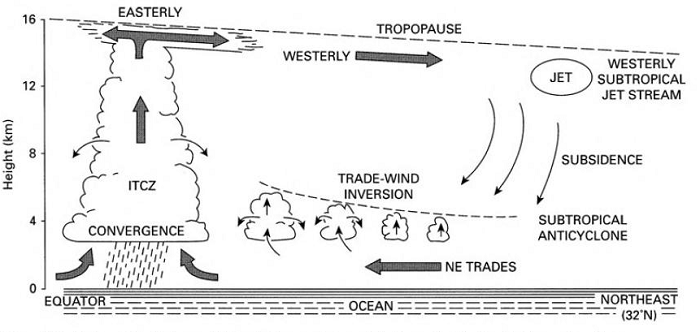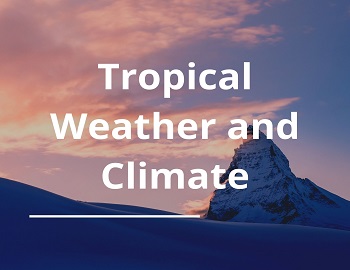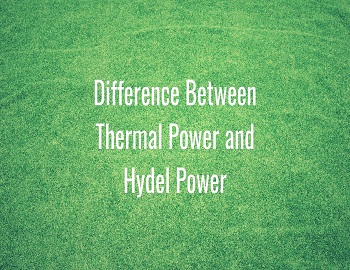Tropical Weather and Climate:
Tropical climates are usually characterized as climates where there are no true temperature distinction between summer and winter. They normally occur between 30°N and 30°S. This is the area of the Hadley cell, so that much of the weather is controlled by the prevailing barotropic conditions.

| Hadley Cell: For simplicity, let’s begin by looking at surface winds and pressure patterns on an ideal Earth, one that does not have oceans and continents, or seasons. Hadley cells are key to understanding the wind patterns on our ideal Earth. These cells form because the Equator is heated more strongly by the Sun than other places, creating thermal circulations. Air rises over the Equator and is drawn poleward by the pressure gradient. But as the air moves poleward, the Coriolis force turns it westward, so it eventually descends at about a 30° latitude, completing the thermal circulation loop. This is a Hadley cell. |
A Hadley cell, part of the general circulation, occur in each hemisphere. The weather is very closely related to the airflow patterns. Air flows equatorward at low levels in each cell. These airflows converge at the Intertropical Convergence Zone (ITCZ) and rise to create cloud and precipitation. The latent heat released during this ascent provides much of the energy needed to continue the whole cellular circulation. The air ascends towards the tropopause where it diverges and begins to flow polewards. As it flows, it cools by long-wave radiations loss, increase in density and descends. Although the descent covers a circular area it is particularly concentrated around 30° latitude. In the upper troposphere at these latitudes the interaction between Hadley cell air and that converging from mid-latitudes, combined with a strong Coriolis force, leads to the creation of a subtropical jet stream. This has a major influence on mid-latitude weather. Within the Hadley cell, the descending air is adiabatically warmed, so that it arrives back at the surface as a dry, cloudless airstream. Once at the surface the air diverges, some flowing as the trade winds towards the ITCZ to complete the cell. The trade winds are, of course, influenced by the Earth’s rotation, although there is no complete deflection so that in the Northern hemisphere the near-surface flow is the northeast trades. The airflow aloft, known as the counter trades, is from the southwest.
In the Southern hemisphere, the corresponding winds are the southeast trades and northwest counter trades. The major area of cloud formation in the tropics is around the ITCZ, which is a region of instability. Virtually all of the rest of the tropics is subject to more or less persistent subsidence invasion in which warm descending air traps somewhat cooler air right at the surface. This feature is usually best developed and closest to the surface, at the outer, poleward limits of the Hadley cell. However, it persists throughout much of the trade-wind area although rising to a higher level as the equator is approached. This feature is known as the trade wind inversion. Any tendency towards instability caused by surface heating can rarely overcome this dynamically created feature. Although the surface trade winds are able to pick up a great deal of moisture when they flow over the ocean, they cannot release it, or the associated latent energy, until they reach the ITCZ. Hence high humidities but low precipitation amounts are a feature of several tropical areas.










Comments (No)